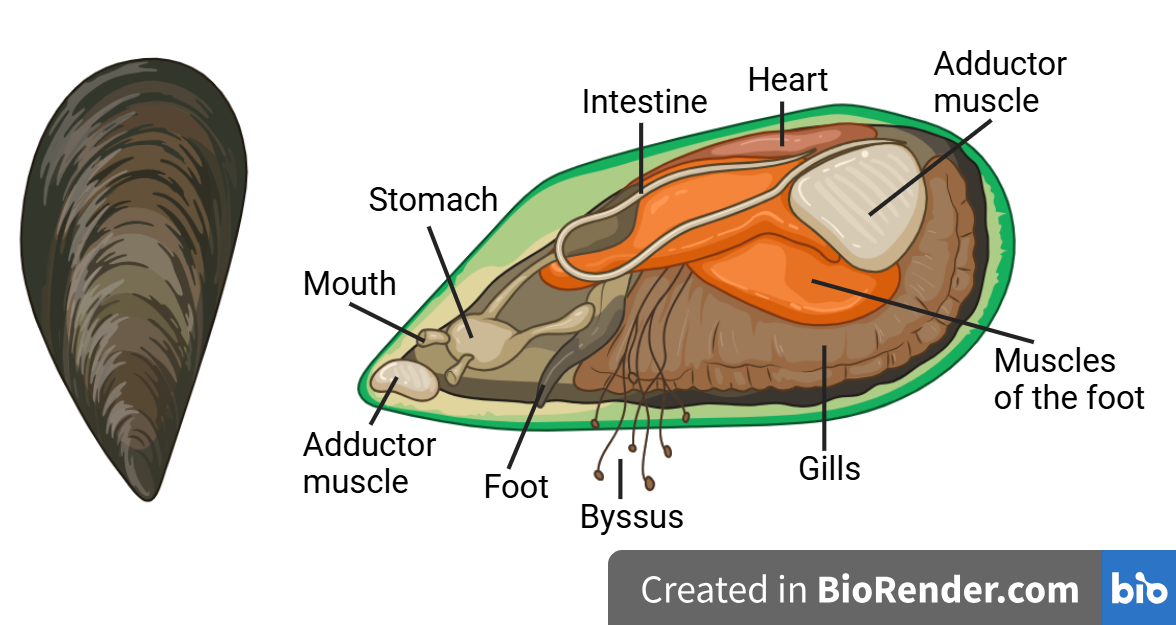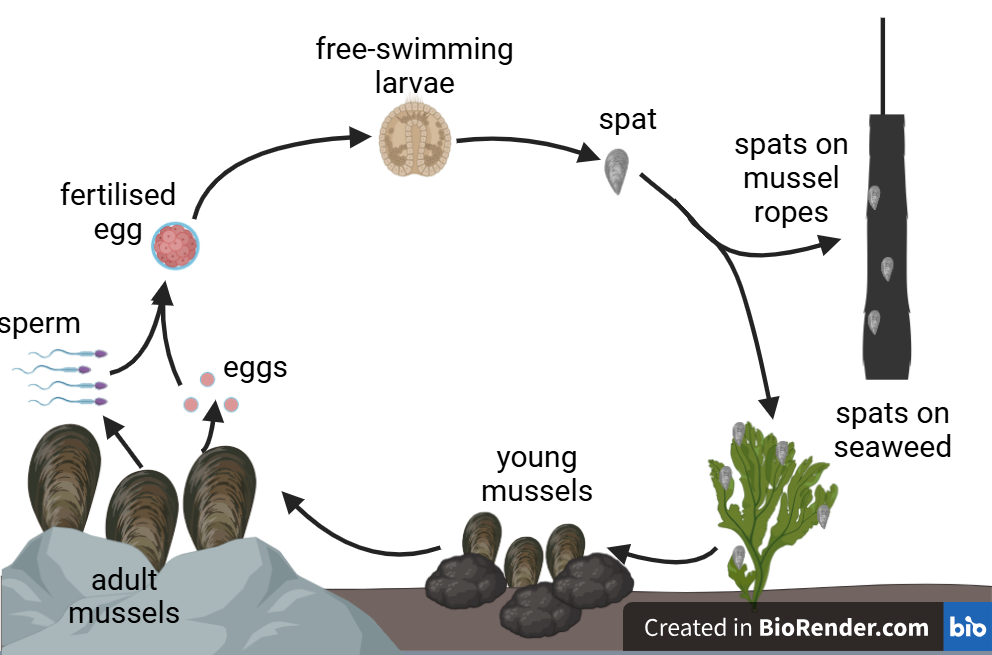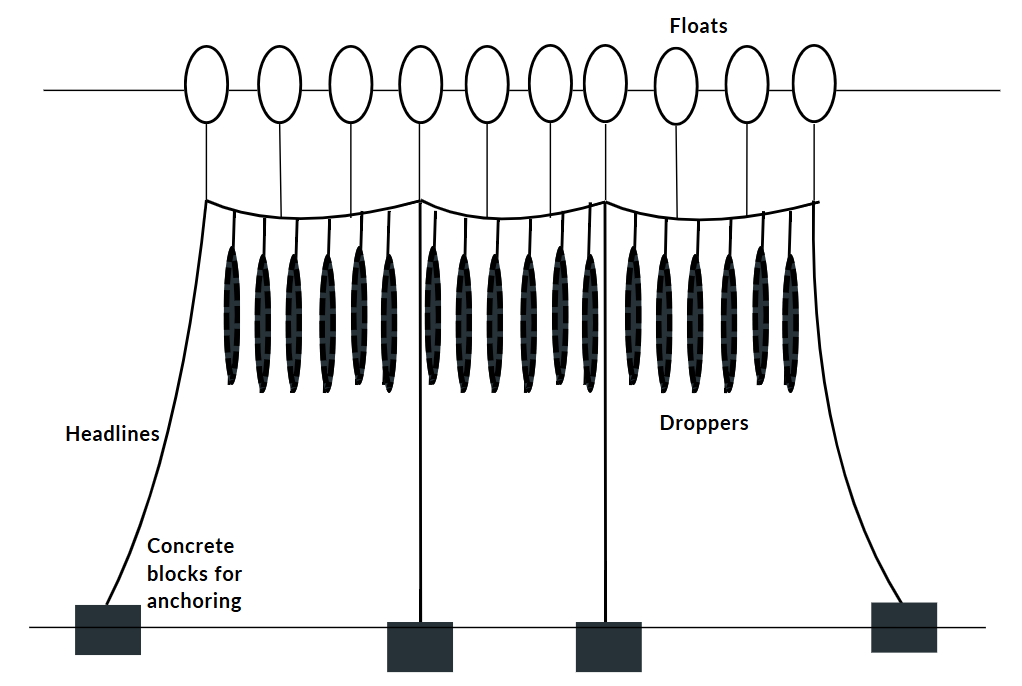Shellfish Aquaculture
Introduction to Shellfish Aquaculture
Whilst salmon farming dominates the Scottish aquaculture industry, shellfish farming is also a thriving sector with species including mussels, Pacific oysters, native oysters, queen scallops and king scallops being produced.
Common or blue mussels are the main species, accounting for around 95% of the total shellfish production. 81% of all Scottish mussels are grown in Shetland.
Mussel anatomy
Mussel anatomy
Mussels have a soft body covered by a two-part hinged shell. They filter feed, taking in their food by pumping a steady stream of water through a filter to collect plankton. The filter acts as gills, allowing them to obtain oxygen and filter debris from the water.
They have two adductor muscles which allow them to open and close their shell, they also have muscles which connect to a foot, allowing them to move.
They also have a circulatory system and a digestive system.

The mussel lifecycle
The mussel lifecycle
Female mussels from the age of one onwards release from 5 to 25 million eggs into the water at spawning time. These eggs measure just a few hundredths of a millimetre, 95% will die rapidly or be consumed by sea creatures. At the same time, the male releases a steady stream of milt, containing the equivalent of 10,000 spermatazoa per egg, turning the surrounding water milky.
The fertilised eggs develop rapidly and become swimming larvae within a few days, using small hairs called cilia to move around. Ocean currents can carry them hundreds of kms away from their birthplace.
Once around half a mm in size they prepare to 'settle', usually on seaweed initially or on capture devices such as ropes in aquaculture. They are commonly known as 'spat' at this stage.
Their characteristic hard shell then develops and they reach their adult form. They will then live anchored to one spot, growing up to a cm a month in good conditions.

Mussels growing on man made structures
Mussels growing on man made structures
Mussels have thread-like fibres called byssal threads, or otherwise known as a "beard", which help them attach to solid structures such as rocks or man made structures such as marinas or mussel lines in aquaculture. They form large colonies by attaching to each other with these threads. These colonies attract many marine creatures which live on or between the mussels and use them for food and shelter . In the video you can see a large number of mussels attached to a marina. Can you spot any other species?
Did you notice that the mussels have opened their half shells wide enough to breathe and feed? Each individual mussel filters around 2 to 3 litres of water per hour. Edible particles are transported to the digestive tract. In mussel aquaculture they do not need to be fed by the shellfish farmer and are entirely dependent on taking in their food from the sea. However, this also puts them at higher risk from sea pollution as harmful substances can accumulate.
Mussel farms
Mussel farms
Mussel farms are made of long lines of rope secured to the sea bed and held afloat by buoys. The young mussel larvae move in currents for the first few weeks of life before attaching themselves to underwater surfaces such as these ropes where they grow until they are harvested.
